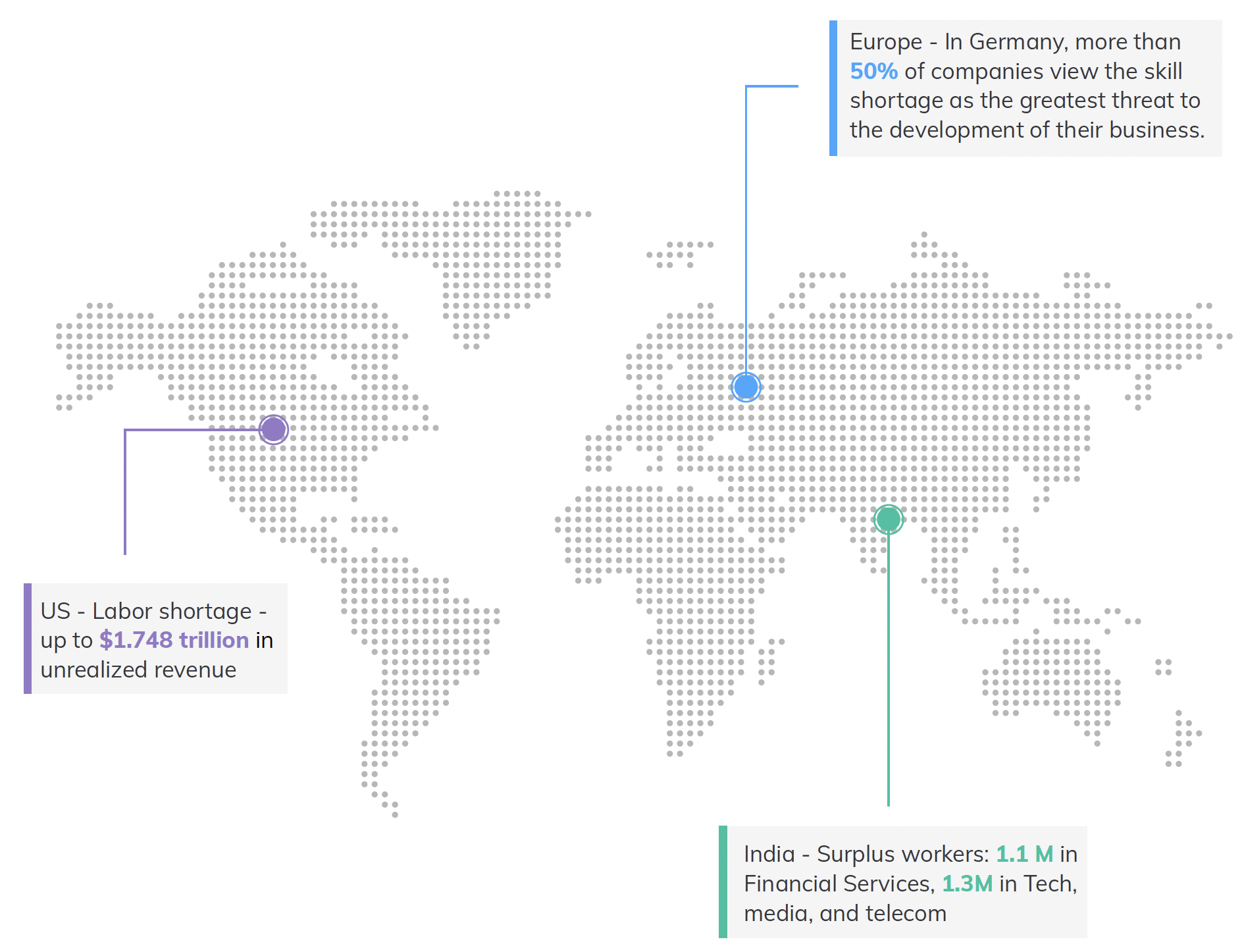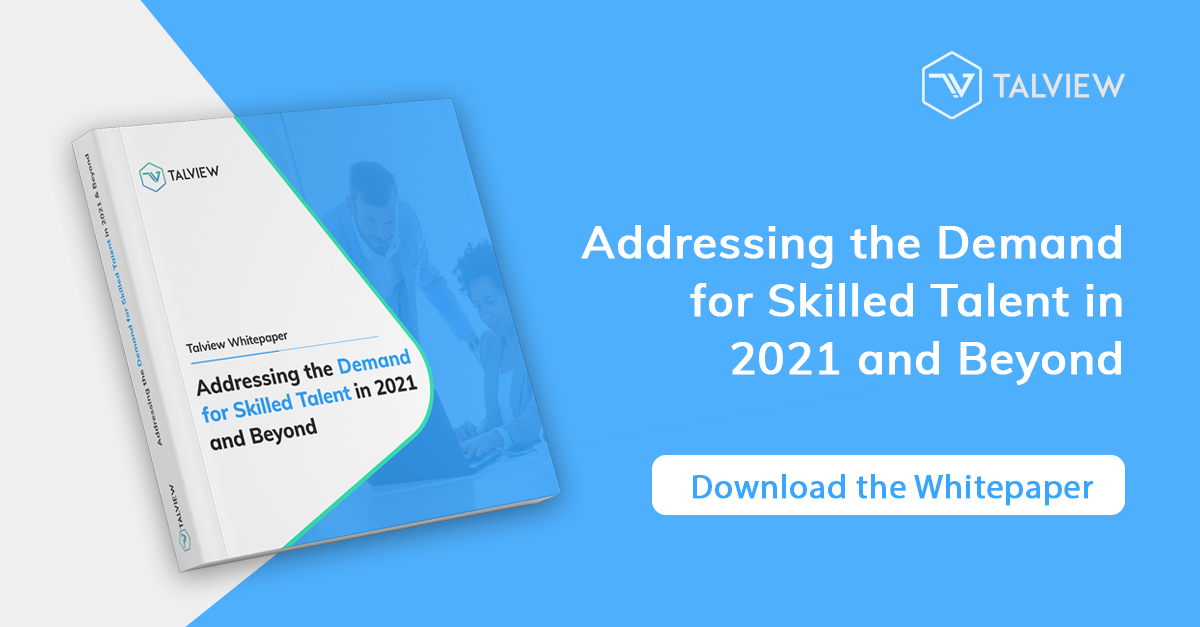Even before the pandemic, the demand for skilled workers was accelerating fast. Now, with the surge in digital transformation, upheavals around remote work, and “The Great Resignation,” the skilled labor shortage in the technology, IT, and BFSI sectors has skyrocketed. In fact, seven in ten employers globally are struggling to hire skilled workers.1
Skilled employees have more freedom to shop around for jobs that best suit their needs, while technological advancement has made their skills even more in-demand – 40% of companies hired tech staff during the pandemic, and 66% of those need to recruit more in 2021.2
How can companies meet the growing expectations of top skilled candidates and address the shortage of skilled workers?
This requires an integrated approach that values both talent lifecycle digitization and talent supply chain management. Organizations that prioritize and integrate these two tenets will be able to drive candidate experience, process accuracy, and time efficiencies.
The Skilled Worker Shortage
The skills shortage is taking place across multiple skillsets, sectors, and geographies. In the global BFSI industry, almost half of firms say their quality standards are dropping as a result of the skills squeeze.3 In tech, media, and communications, there’s a lack of technical expertise to account for new innovations. And in IT services, the need for specific domain knowledge continues to grow, particularly within cybersecurity, cloud, and DevOps.

The US is facing perhaps the most severe shortage, with a predicted unrealized revenue of up to $1.748 trillion by 2030 if the situation continues.4 Europe is facing a comparable skills crunch, with more than 50% of companies in Germany viewing it as a threat to their business.5 India, however, is the only country that’s predicted to see a surplus of technical talent in the technology and financial services sectors.6
These skills shortages have a huge impact on organizations, causing excess stress on existing employees and a drop in productivity rates, putting worker wellbeing at risk as well as meeting objectives.
Clearly, organizations are facing an uphill battle when it comes to securing skilled workers. Doing this successfully means, first and foremost, being able to make better decisions, faster, and putting the candidate at the center.
How can organizations address this lack of skilled workers?
Adopting an Integrated Approach
Plugging this skills gap means combining two core tenets: the digitization of the talent lifecycle and talent supply chain management. Bringing these approaches together will allow for a fully integrated, digitized, data-powered approach to addressing the demand for skilled talent.
Talent Lifecycle Digitization
The complete digitization of the talent lifecycle allows organizations to easily access a pool of skilled talent, keep them in the hiring funnel through excellent candidate experience, and offer upskilling and training opportunities post-hire.
Here’s how it looks in its entirety:
-
Virtual admissions process
-
Online course exams
-
Remote hiring processes
-
Online industry certification exams
-
Online evaluations for internal promotions
-
Online evaluations for internal learning tracks
Talent Supply Chain Management
By seeing talent acquisition through the lens of supply chain management, companies can be more agile and proactive and support a steady pipeline of talent which they can dip into when needed.
How can they do this?
-
Look inward first: Place importance on upskilling and L&D initiatives internally using AI-powered assessment solutions
-
Source externally when needed: Deploy advanced online hiring technologies to engage candidates throughout the funnel
-
Leverage data and simulations to forecast future trends and be prepared for upticks and slow-downs in talent demand
-
Maintain an inventory of talent to tap into for future needs
As technology advances and candidate expectations rise further, we can expect to see a whole host of new developments, including more advanced assessment solutions, the end of the traditional resume, and more dynamic data insights.
Are you interested in learning more about the skills shortage and how organizations can address it in 2021 and beyond? Download the full whitepaper here.







Leave a Reply